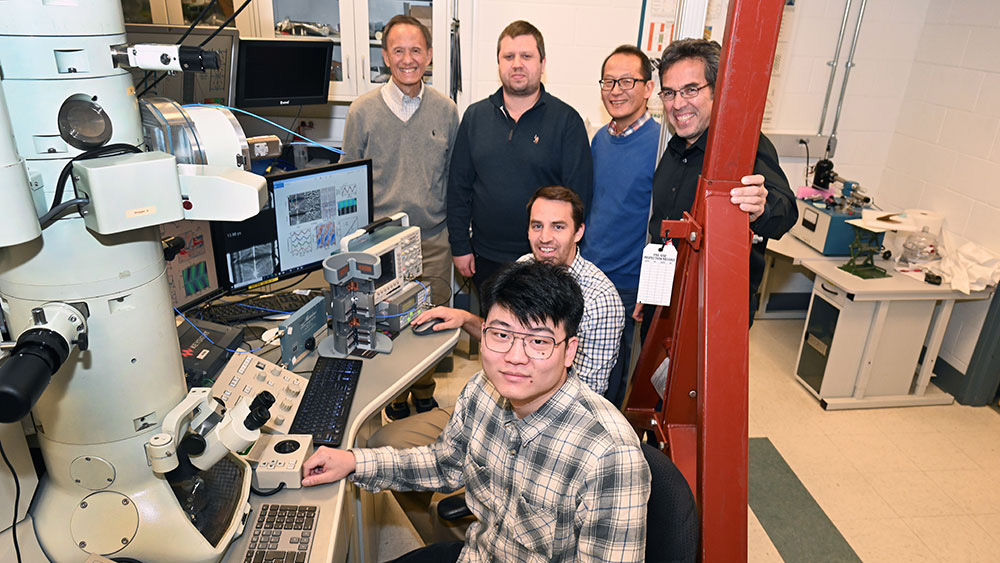
Kevin Coughlin/Brookhaven National Laboratory
Members of the Brookhaven research team next to the Lorentz transmission electron microscope: Yimei Zhu, Alex Pofelski, Myung-Geun Han, and Fernando Camino (back row); Spencer Reisbeck (middle); and Chuhang Liu (front).
One major category of the next generation of energy-efficient microelectronic devices and information processing technologies will likely be based on “spintronics,” which leverages both an electron’s charge and its spin—the tiny “up” or “down” magnetic moment carried by every electron. Now, a relatively new subset of spintronics has sprung up, known as magnonics, which harnesses the collective behaviors of spins, known as spin waves or magnons.
|
ADVERTISEMENT |
To advance the development of magnonics, researchers still have much to learn about spin waves in magnetic materials. One challenge has been how to most effectively image spin waves at the billionth-of-a-meter level, or nanoscale, because current microscopy techniques are neither sufficiently sensitive to spin nor “fast” enough to actually image magnon behaviors, which take place on extremely short timescales.
…
Add new comment